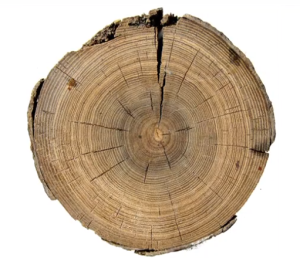NASA Study Predicts Mega Drought in the Later Half of 21st Century
- Published:
- Categories: Environmental Preservation
NASA: Mega Droughts in Southwest and Central U.S.A.
Over the past few decades U.S Southwest and Central Plains have faced severe droughts that have caused reduced yearly rainfall and increased temperatures across these regions.
However droughts have been a major part of history in this part of the world. For the past three millennia, this region of the United States has been affected by several major droughts, some that have even lasted up to 30 years. Past studies modeling drought variability and dynamics have only focused in using data from only the past century. However, to understand the risk that Southwest and Central United States is facing in the latter half of the century, a much longer timescale has to be used. What is being discovered is that the issue of doughts in parts of the United States may be getting drastically worse.
In a new study by NASA, scientists examined tree-rings to retrieve data going back 1,000 years to study previous wet and dry periods around the region. This natural data provided a wealth of information by observing the amount of space between rings in centuries’ old trees. During the years of prevalent rainfall, these trees grew more, and thus grew a wider ring that year. Narrower rings indicated stunted tree growth during years of drought.
This same study compared tree rings of the same species of trees in modern droughts to produce an accurate drought map across the world reflecting the last 1,000 years of drought by examining moisture conditions. Having data spanning across a much larger timescale helped scientists examine a bigger picture of modern-day and future droughts, taking into account Earth’s natural drought cycle.
Natural Droughts
Historically speaking, Earth goes through cycles of natural drought. Recent evidence for these cycles of natural drought includes the Dust Bowl of the 1930’s, which lasted around a decade, and the current drought in Southwest United States.
Records of other mega droughts in North America date back to medieval times, between 1100 and 1300. Although the data collected from studying tree rings during this period revealed that these mega droughts were no worse than present droughts, they spanned for around 30 to 50 years.
Mega Drought
Based on the data retrieved from the NASA study, scientists are suggesting that the drought models are predicting a drier and warmer latter half of the 21st century. What we do about green house gas emissions in the next few years will directly affect how these gas emissions affect areas of the United States. According to Ben Cook, lead author of the study and climate scientist at NASA’s Goddard Institute for Space Studies, estimates that the current likelihood of a mega drought lasting over 30 years is 12%.
Cook also suggest that if greenhouse gas emission levels continue increasing in a similar pattern as they are now doing throughout the rest of the 21st century, the probability of a mega drought increases to 80% between the years 2050 and 2099. If greenhouse has emissions stop increasing by mid-21st century, the probability drops to around 60%.
Human Challenge
“It is rare to see all signs pointing so unwaveringly toward the same result, in this case a highly elevated risk of future mega droughts in the United States,” comments Cook. When NASA scientists compared past droughts and mega droughts with the models projecting the mega drought expected for the latter half of the 21st century, mega droughts during the 21st century are likely to be even worse than previous mega droughts seen during Medieval times.
These mega droughts that occurred during medieval times had adverse effects on the societies that inhabited North America at the time. Due to the severe drought, they were forced to leave behind their agricultural economies and relocate to other societies due to repeated crop failure, reduced wild food sources, and increased competition for scarce resources.
There is no doubt that a mega drought would have severely adverse effects on the populations of Southwest and Central United States. As these areas are becoming increasingly more populated throughout the years, creating more demand for water and other important resources, people living in these areas will need to adapt to the changing climate conditions or be forced to relocate like their ancestors.
How Does Contactsforless Show It Cares About Climate?
Contactsforless is all about trying to help our planet and the communities affected. We have many non-profits and charities that we donate 51% of our net profits to and guess what? You help choose where we donate. But to be sure, we make sure that we give you many options and causes, including that of non profit organizations that are dedicated to working on the Global Warming and Climate issue. Click here to learn more about how we donate to help our planet.
Get access to exclusive subscriber-only promos!
Be first to flash sales and other exciting deals!


 US website
US website